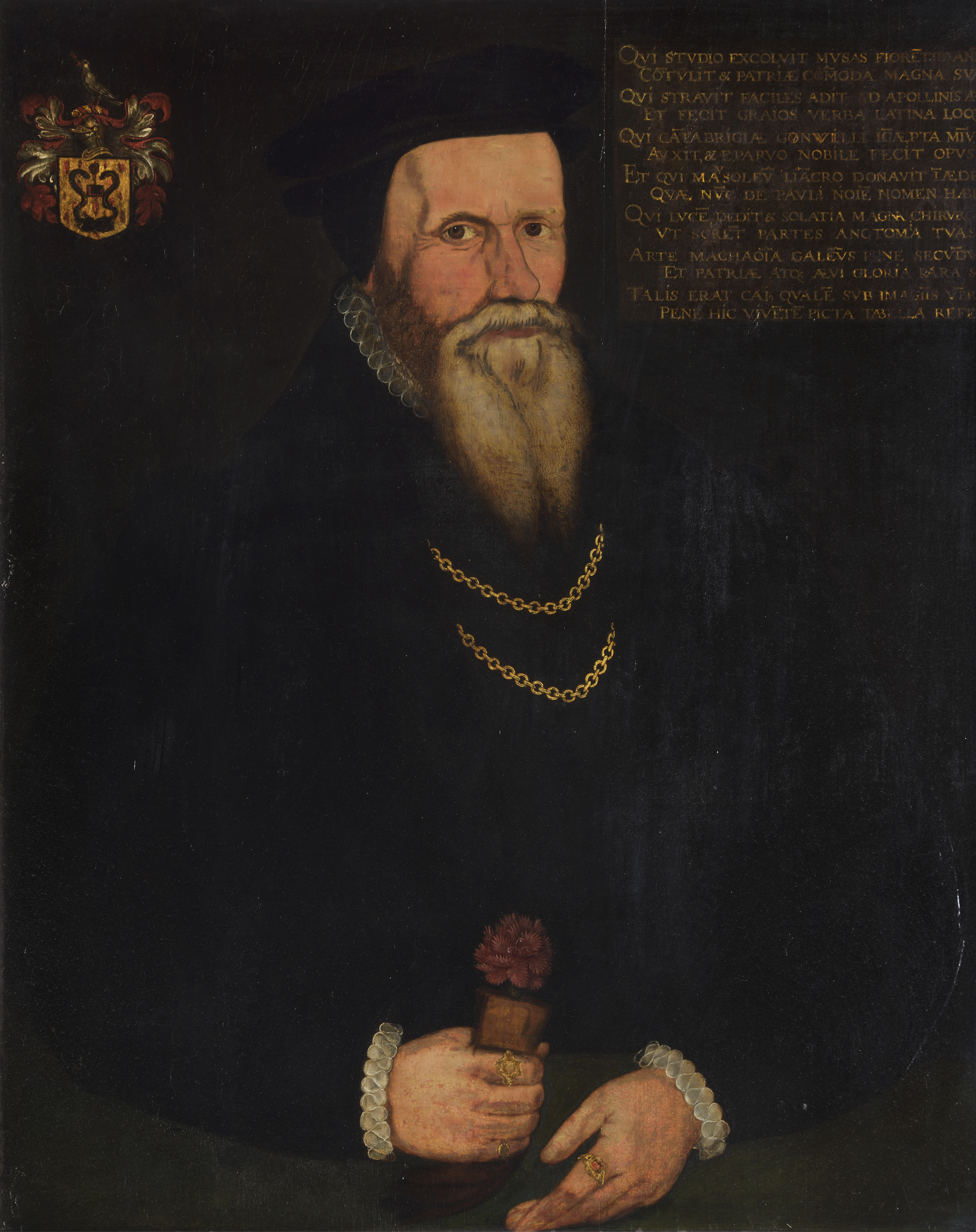Gonville and Caius College
We shall probably not greatly err if we reckon that about three hundred [manuscripts] of the present collection or somewhat more were in the library in 1500. If so, it is the most substantial medieval academic library surviving intact in Cambridge" C. Brooke, A History of Gonville & Caius College

Gonville & Caius is the fourth oldest among the constituent colleges of the University. Gonville Hall, named after its founder Edmund Gonville, received its royal charter in 1348 but was re-established in 1557, after Dr. Caius obtained from the Crown a new charter as the ‘College of Gonville and Caius, founded in honour of the Annunciation of the Blessed Virgin Mary’. The College’s first dedicated Library premises date from 1441 and most of the books were chained until the time of the Restoration in 1660. The Library has moved twice: in 1857 to new buildings by Anthony Salvin and again in 1996, across Senate House Passage, to C.R. Cockerell’s neo-classical University Library of 1840, originally designed as the north wing of a larger complex that was never completed. Manuscript books were endowed by benefactors to Gonville Hall from its inception and made available for use by its fledgling community; a Registrum preserved in the Library (MS 900/900) contains an inventory of books circulated to fellows between 1406 and 1410. The Cockerell Building is divided into the Upper Library and the Lower Library. The former contains the working collections and the latter houses the College’s historic collections of around 26,000 incunabula and early printed books and 900 manuscripts.
Manuscripts
As Brooke noted, more than 300 manuscripts survive from the medieval library, some in their original bindings. This is the largest surviving medieval college library in Cambridge, and it is especially rich in the discipline of Roman law. The whole collection was consolidated and expanded following the College’s second foundation. As a humanist who spent considerable time in Italy, John Caius was able to acquire many examples of the new learning, including medical works in Greek and a Hebrew Bible. The Library now possesses over 700 manuscripts, most dating from before 1500, including illuminated Books of Hours and Psalters.
Early printed books
By 1500 the Library held 300 books, principally in the disciplines of theology, law and medicine, showing the college’s early commitment to the learned professions. Further important bequests came from William Branthwaite (Master 1607-1619) whose fine library, encompassing works of theology, philosophy and classical literature included sixty books printed before 1520 and James Burrough (Master 1754-1764), who bequeathed several hundred books. The Library now holds 104 incunabula (books printed before 1501). The Lower Library collections are still being expanded, principally with material relating to the history of the College, its alumni and the wider University as well as histories of the city of Cambridge, the surrounding area and East Anglia.
Other material
The Library administers a small archive of holograph musical scores by members of the College including Charles Wood and Patrick Hadley and currently retains the archive and personal library of the Arabist Charles Doughty.
More information about the Library is available at https://www.cai.cam.ac.uk/discover/library

